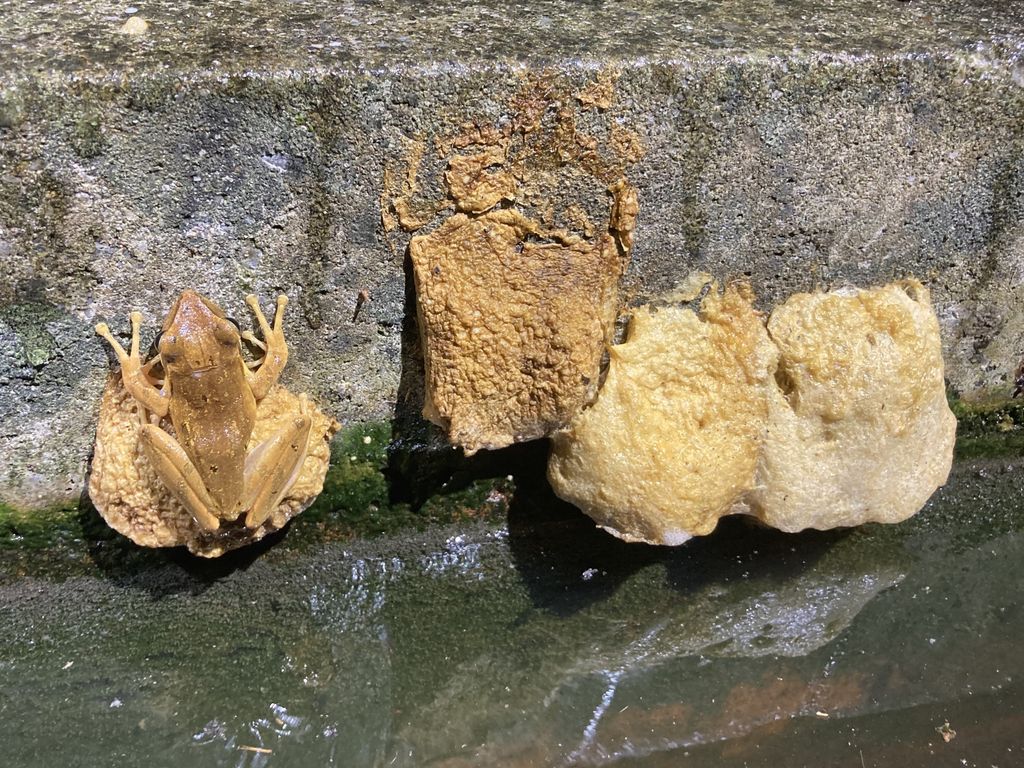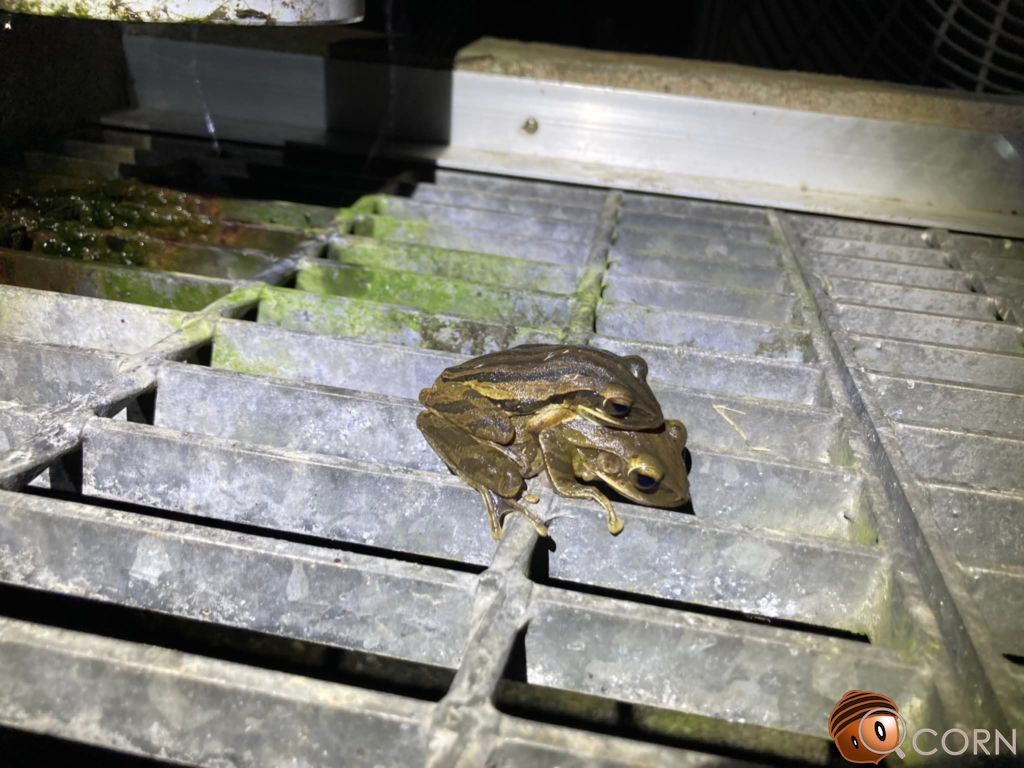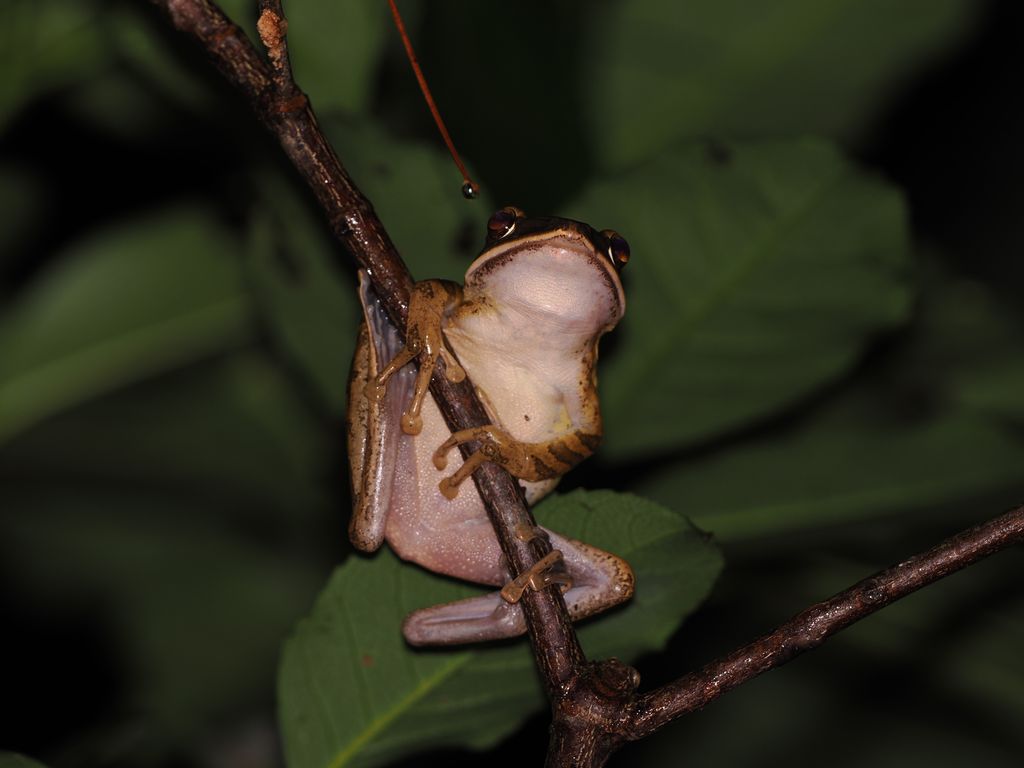Polypedates leucomystax
Japanese Name: シロアゴガエル
Chinese Name: 白頷樹蛙
English Name: White-lipped Tree Frog
Origin: Widely distributed in Southeast Asia, from northeastern India to the Philippines
Reference: National Institute for Environmental Studies, Invasive Species Database
https://www.nies.go.jp/biodiversity/invasive/DB/detail/40030.html
This species has been confirmed on many islands of the Okinawa Islands, as well as Kitadaitojima, the Sakishima Islands (including Miyakojima and Ishigakijima), and Yoronjima in Kagoshima Prefecture. It is especially common on Okinawajima and Miyakojima. Although once found on Iriomotejima, the population there was declared completely eradicated in 2019.
The White-lipped Tree Frog was first discovered on Okinawajima in 1964 and was first recorded on Miyakojima in 1997. Since Okinawa was under U.S. administration from 1945 to 1972, it is speculated that individuals were introduced either accidentally during the transport of supplies by the U.S. military or escaped from captivity, gradually spreading across many islands.
※ Designated as a “Specified Invasive Alien Species” under the Invasive Alien Species Act
※ Listed among the “100 Worst Invasive Alien Species in Japan”
Two other Polypedates species occur in Taiwan: the invasive species Polypedates megacephalus and the native P. braueri. These have sometimes been misidentified as P. leucomystax in the past. However, based on the scientific name, the species name comes from the Greek leuco- (white) and mystax (upper lip), referring to the species’ distinctive white lip margin.


